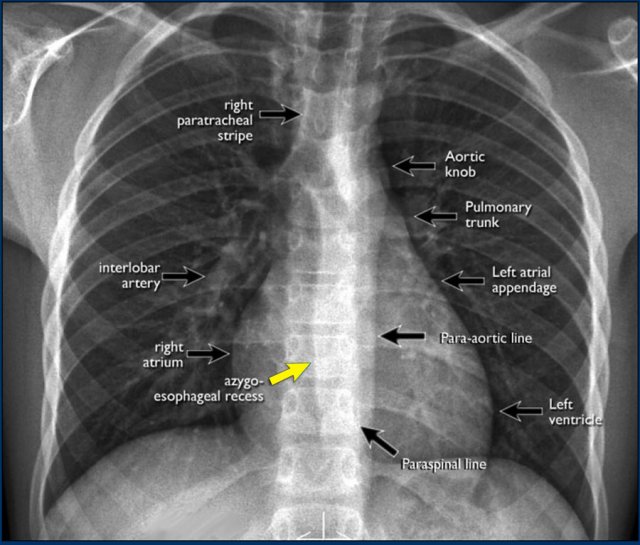Health Tips
Expert Tips for Healthy Teeth Your Essential Guide
Maintaining healthy teeth is essential for overall well-being and confidence in your smile. Here’s a comprehensive guide filled with expert tips to help you achieve optimal dental health and keep your teeth strong and bright.
Understanding Dental Health:
Healthy teeth are not just about aesthetics; they’re crucial for proper chewing, speaking, and overall oral health. Understanding the importance of dental health is the first step towards achieving a radiant smile and preventing oral problems.
Establishing Good Oral Hygiene Habits:
Good oral hygiene is the foundation of healthy teeth. Brush your teeth at least twice a day with fluoride toothpaste and a soft-bristled toothbrush. Don’t forget to brush your tongue to remove bacteria and freshen your breath. Additionally, floss daily to remove plaque and food particles from between your teeth and along the gumline.
Choosing the Right Toothbrush and Toothpaste:
Selecting the right toothbrush and toothpaste can make a significant difference in your oral hygiene routine. Choose a toothbrush with soft bristles and a comfortable grip to effectively clean your teeth without causing damage to your gums. Opt for fluoride toothpaste to strengthen enamel and protect against cavities.
Practicing Proper Brushing Technique:
Proper brushing technique is essential for removing plaque and bacteria from your teeth and gums. Hold your toothbrush at a 45-degree angle to your gums and use gentle, circular motions to clean the front, back, and chewing surfaces of your teeth. Be thorough but gentle to avoid damaging your enamel or gums.
Flossing Regularly:
Flossing is equally important as brushing for maintaining healthy teeth and gums. Use dental floss or interdental brushes to clean between your teeth and along the gumline where your toothbrush can’t reach. Flossing removes plaque and debris, reducing the risk of gum disease and tooth decay.
Limiting Sugary and Acidic Foods:
Frequent consumption of sugary and acidic foods can contribute to tooth decay and enamel erosion. Limit your intake of sugary snacks, sodas, and acidic beverages like citrus juices and sports drinks. When you do indulge, rinse your mouth with water afterward to help neutralize acids and prevent damage to your teeth.
Eating a Balanced Diet:
A balanced diet rich in fruits, vegetables, lean proteins, and whole grains provides essential nutrients for healthy teeth and gums. Incorporate calcium-rich foods like dairy products, leafy greens, and almonds to strengthen enamel and promote oral health.
Avoiding Tobacco Products:
Smoking and using tobacco products not only stain your teeth but also increase the risk of gum disease, tooth loss, and oral cancer. If you smoke or use tobacco, consider quitting to protect your oral and overall health.
Regular Dental Check-ups:
Routine dental check-ups are essential for maintaining healthy teeth and catching any potential issues early. Visit your dentist at least twice a year for professional cleanings and exams. Your dentist can detect signs of tooth decay, gum disease, and other oral problems and provide appropriate treatment.
Addressing Dental Concerns Promptly:
If you experience any dental pain, sensitivity, or changes in your oral health, don’t ignore them. Addressing dental
Elevate Your Intellect Strategies for Brain Improvement
Unlock Your Brain’s Power: Strategies for Enhanced Cognitive Function
Understanding Brain Improvement
In today’s fast-paced world, our brains are constantly bombarded with information and stimuli, making it essential to prioritize brain improvement. But what exactly does brain improvement entail? Essentially, it’s the process of enhancing cognitive function, memory, focus, and overall mental performance through various strategies and techniques.
The Importance of Cognitive Function
Cognitive function refers to the mental processes involved in acquiring, processing, and utilizing information. It encompasses a wide range of abilities, including memory, attention, language, reasoning, and problem-solving. Optimal cognitive function is crucial for everyday tasks, from learning and working to decision-making and problem-solving.
Effective Strategies for Brain Improvement
Fortunately, there are numerous effective strategies for enhancing cognitive function and improving overall brain health. These strategies encompass various aspects of lifestyle, including diet, exercise, sleep, mental stimulation, and stress management.
Optimizing Brain Health through Diet
A healthy diet plays a crucial role in brain improvement. Certain nutrients, such as omega-3 fatty acids, antioxidants, vitamins, and minerals, are essential for brain function. Incorporating foods rich in these nutrients, such as fatty fish, nuts, seeds, fruits, and vegetables, can support cognitive function and protect against age-related cognitive decline.
Harnessing the Power of Physical Exercise
Physical exercise is not only beneficial for the body but also for the brain. Regular exercise improves blood flow to the brain, stimulates the release of neurotrophic factors, and promotes the growth of new brain cells. Additionally, exercise enhances mood, reduces stress, and improves sleep – all of which are important for brain health.
Prioritizing Quality Sleep
Sleep is essential for cognitive function and overall brain health. During sleep, the brain consolidates memories, processes information, and rejuvenates itself. Chronic sleep deprivation can impair cognitive function, attention, and decision-making. Therefore, prioritizing quality sleep is crucial for optimal brain improvement.
Engaging in Mental Stimulation
Just like physical exercise, mental stimulation is vital for brain improvement. Engaging in mentally challenging activities, such as puzzles, games, reading, and learning new skills, stimulates neural pathways, enhances cognitive function, and promotes brain plasticity. Continuous learning and mental stimulation are key to maintaining a sharp mind.
Managing Stress Effectively
Chronic stress can have detrimental effects on the brain, including impaired memory, attention, and decision-making. Therefore, it’s essential to manage stress effectively through relaxation techniques, mindfulness, meditation, and other stress-reducing activities. Managing stress not only improves brain health but also enhances overall well-being.
Maintaining Social Connections
Social connections are important for brain health and cognitive function. Interacting with others stimulates the brain, promotes emotional well-being, and reduces the risk of cognitive decline. Maintaining strong social connections through friendships, family relationships, and community involvement is crucial for optimal brain improvement.
Continual Growth and Development
Brain improvement is an ongoing process that requires continual growth and development. By incorporating these strategies into your lifestyle and making them a priority, you can enhance cognitive function, improve brain health, and unlock your brain’s full potential. Remember, a healthy brain is the foundation for a fulfilling and successful
Embrace Witch Hazel’s Glow Skin’s Luminescent Potion
Unlocking Witch Hazel: Skin’s Radiance Booster
The Origins of Witch Hazel
Witch hazel, derived from the North American shrub Hamamelis virginiana, has been used for centuries as a natural remedy for various skin conditions. Native Americans first discovered its benefits, using it to treat swelling, inflammation, and irritation. Over time, its popularity has grown, and today, witch hazel is a staple in many skincare routines.
The Science Behind Witch Hazel
What makes witch hazel so effective for the skin? It contains tannins, a type of polyphenol with astringent properties. These tannins help to tighten the skin and reduce inflammation, making witch hazel particularly useful for soothing irritation and redness. Additionally, witch hazel is rich in antioxidants, which can help protect the skin from damage caused by free radicals.
Soothing Irritation and Redness
One of the primary benefits of witch hazel is its ability to soothe irritation and redness. Whether you’re dealing with a sunburn, razor burn, or eczema flare-up, applying witch hazel can provide immediate relief. Its anti-inflammatory properties help to calm the skin, reducing redness and swelling.
Balancing Oil Production
Another advantage of witch hazel is its ability to balance oil production in the skin. For those with oily or acne-prone skin, witch hazel can help to control excess oil and prevent breakouts. By gently removing excess oil and impurities from the skin, witch hazel leaves the complexion feeling clean and refreshed without stripping away natural moisture.
Minimizing Pores
Witch hazel is also known for its pore-minimizing properties. The astringent effect of witch hazel helps to tighten and shrink enlarged pores, giving the skin a smoother appearance. By tightening the skin, witch hazel can also help to reduce the risk of dirt and bacteria getting trapped in the pores, which can lead to blackheads and breakouts.
Fighting Signs of Aging
In addition to its immediate benefits, witch hazel can also help to fight signs of aging over time. Its antioxidant properties help to neutralize free radicals, which can damage the skin and accelerate the aging process. By incorporating witch hazel into your skincare routine, you can help to protect your skin from environmental stressors and maintain a youthful complexion.
How to Incorporate Witch Hazel into Your Skincare Routine
There are several ways to incorporate witch hazel into your skincare routine. One option is to use a witch hazel toner after cleansing your face. Simply apply the toner to a cotton pad and swipe it over your skin, focusing on areas of irritation or excess oil. You can also find skincare products such as cleansers, moisturizers, and serums that contain witch hazel as a key ingredient.
Cautionary Notes
While witch hazel is generally safe for most skin types, it’s essential to patch test before using it on your face, especially if you have sensitive skin. Some people may experience irritation or allergic reactions to witch hazel, so it’s best to start with a small area of skin to see how your skin reacts. Additionally, be sure to choose witch
Skin’s Secret Weapon Harnessing the Power of Propolis
Enhance Your Glow: Propolis Skin Benefits
Unlocking the Power of Propolis
Propolis, often referred to as nature’s miracle, is a sticky substance collected by bees from tree buds, sap flows, and other botanical sources. While it’s primarily known for its role in protecting the beehive from external threats, its benefits extend far beyond the hive. In recent years, propolis has gained significant attention in the skincare world for its remarkable effects on the skin. Let’s delve into the depths of this golden elixir and uncover its secrets for achieving radiant, healthy skin.
The Essence of Propolis
At its core, propolis is a complex mixture of resins, essential oils, waxes, and pollen, meticulously crafted by bees to safeguard their hive. This natural concoction possesses a plethora of beneficial compounds, including flavonoids, phenolic acids, and terpenes, each contributing to its potent healing properties. From its antioxidant prowess to its anti-inflammatory abilities, propolis embodies the essence of holistic skincare, offering a multifaceted approach to skin health.
Harnessing the Power of Antioxidants
One of the key components of propolis is its high antioxidant content, which plays a pivotal role in combating oxidative stress and free radical damage. By neutralizing harmful free radicals, propolis helps protect the skin from premature aging, environmental aggressors, and UV-induced damage. Incorporating propolis into your skincare routine can fortify your skin’s natural defenses, promoting a youthful complexion and enhancing overall skin resilience.
Skin Soothing Sensation
Beyond its antioxidant properties, propolis boasts remarkable anti-inflammatory effects, making it a soothing remedy for various skin concerns. Whether you’re dealing with acne, eczema, or sensitive skin, propolis can help alleviate redness, irritation, and inflammation, promoting a calmer, more balanced complexion. Its gentle yet effective nature makes it suitable for all skin types, offering relief to those plagued by persistent skin issues.
Revitalize and Renew
Propolis doesn’t just soothe the skin—it also stimulates cellular renewal and collagen production, leading to improved skin texture and elasticity. By encouraging the skin’s natural regeneration processes, propolis helps fade scars, reduce the appearance of fine lines and wrinkles, and promote a smoother, more youthful complexion. Regular use of propolis-infused skincare products can revitalize dull, tired-looking skin, unveiling a radiant, rejuvenated glow.
A Natural Antibacterial Shield
Thanks to its potent antibacterial properties, propolis serves as a natural shield against harmful bacteria, fungi, and other pathogens that can wreak havoc on the skin. Whether you’re battling acne breakouts or minor skin infections, propolis can help purify and clarify the skin, promoting a clearer, healthier complexion. Incorporating propolis into your skincare regimen can help maintain optimal skin hygiene and prevent future blemishes.
The Versatility of Propolis
One of the most remarkable aspects of propolis is its versatility—it can be incorporated into various skincare formulations, including cleansers, toners, serums, and masks. Whether you prefer a lightweight serum for daily hydration or a luxurious mask for intensive treatment, there’s a propolis-infused product to suit your skincare needs. By integrating propolis into your beauty routine, you can experience its transformative effects firsthand and unlock the
Advanced Radiology Assessments for Comprehensive Diagnostics

Unveiling the Power of Precision: Advanced Radiology Assessments
Radiology assessments play a pivotal role in modern medicine, offering comprehensive insights into the intricate details of the human body. From diagnosing ailments to guiding treatment plans, advanced radiology assessments have become indispensable tools in healthcare.
The Evolution of Radiology: Beyond Traditional X-rays
Radiology has come a long way from its early days of simple X-rays. Today, advanced imaging technologies, such as computed tomography (CT), magnetic resonance imaging (MRI), and positron emission tomography (PET), provide detailed cross-sectional views of organs, tissues, and structures. This evolution has revolutionized diagnostic capabilities, enabling healthcare professionals to delve deeper into the complexities of the human anatomy.
Precision Diagnostics through Multimodal Imaging
The synergy of various imaging modalities enhances the precision of diagnostics. Combining CT scans for bone assessment, MRI for soft tissue evaluation, and PET scans for metabolic insights, healthcare providers can create a comprehensive understanding of a patient’s condition. This multimodal approach is particularly beneficial in oncology, neurology, and cardiology, where a nuanced diagnosis is essential.
Early Detection: A Key Advantage of Radiology Assessments
One of the primary benefits of advanced radiology assessments is the ability to detect abnormalities in their early stages. Whether it’s identifying tumors, detecting cardiovascular issues, or assessing neurological conditions, early detection significantly improves the prognosis and treatment outcomes. Radiology assessments empower healthcare professionals to intervene proactively, leading to better patient outcomes.
Tailoring Treatment Plans with Radiology Guidance
Radiology assessments not only aid in diagnosis but also play a crucial role in guiding treatment plans. In interventional radiology, procedures such as angiography, fluoroscopy, and image-guided biopsies leverage real-time imaging to precisely target and treat abnormalities. This targeted approach minimizes invasiveness and enhances the effectiveness of therapeutic interventions.
Radiology in Emergency Medicine: A Time-Critical Resource
In emergency medicine, time is often of the essence. Radiology assessments, including rapid CT scans and point-of-care ultrasound, serve as invaluable tools in assessing traumatic injuries, identifying internal bleeding, and making swift diagnostic decisions. These rapid assessments contribute to timely and life-saving interventions in critical situations.
3D Imaging: A Dimensional Leap in Radiology
The advent of three-dimensional (3D) imaging has further expanded the capabilities of radiology assessments. 3D reconstructions provide intricate details of anatomical structures, aiding in surgical planning, orthopedic assessments, and complex anatomical evaluations. This dimensional leap enhances the precision and accuracy of diagnostics and interventions.
Technological Innovations in Radiology
Technology continues to drive innovations in radiology assessments. Artificial intelligence (AI) algorithms are being integrated into image analysis, aiding in the detection of subtle abnormalities and improving diagnostic accuracy. This synergy between technology and radiology is propelling the field towards more efficient and sophisticated diagnostic capabilities.
Radiology Assessments: Linking Precision with Patient Care
To experience the benefits of advanced radiology assessments and precision diagnostics, visit Radiology Assessments. This platform provides valuable insights into the latest developments, technologies, and applications in the field of radiology. Elevate your understanding of precision diagnostics for enhanced patient care.
Conclusion: Shaping the Future of Healthcare
In conclusion, advanced radiology assessments
Radiology Expertise: Precision Imaging for Informed Healthcare

Unlocking Insights: The Significance of Radiology Expertise in Healthcare
Radiology expertise plays a pivotal role in modern healthcare, providing precision imaging that guides diagnostic and treatment decisions. From routine screenings to complex medical conditions, the expertise of radiologists contributes to a deeper understanding of patients’ health.
The Foundation of Diagnostic Precision
At the heart of radiology expertise lies the ability to capture detailed images of the body’s internal structures. These images serve as a foundation for accurate and precise diagnoses. Radiologists employ a range of imaging techniques, including X-rays, MRIs, CT scans, and ultrasound, to visualize different aspects of the body with exceptional clarity.
Advanced Technology Driving Progress
Advancements in technology have propelled radiology expertise to new heights. High-resolution imaging, 3D reconstructions, and artificial intelligence applications enhance the accuracy and efficiency of diagnoses. This technological progress allows radiologists to detect abnormalities at earlier stages, facilitating more effective interventions and improved patient outcomes.
Multifaceted Contributions to Patient Care
Radiology expertise extends beyond diagnostic imaging. Interventional radiology, a subspecialty within the field, involves minimally invasive procedures guided by imaging techniques. These procedures, such as angioplasty or biopsies, offer therapeutic solutions with reduced risk and shorter recovery times compared to traditional surgical methods.
Specialized Knowledge in Various Modalities
Radiologists possess specialized knowledge in various imaging modalities, each serving distinct purposes. While X-rays are excellent for visualizing bones, MRIs provide detailed images of soft tissues. CT scans offer cross-sectional views, and ultrasound is valuable for real-time imaging. Radiology expertise involves understanding when and how to apply these modalities for optimal diagnostic outcomes.
Contributing to Early Detection and Prevention
Early detection is a cornerstone of effective healthcare, and radiology expertise plays a crucial role in achieving this goal. Routine screenings, such as mammograms and colonoscopies, enable the identification of abnormalities before symptoms manifest. This proactive approach allows for timely interventions and increases the likelihood of successful treatment.
Guiding Treatment Decisions with Precision
In complex medical cases, radiology expertise guides treatment decisions with precision. Imaging studies provide insights into the extent and nature of diseases, helping healthcare teams tailor interventions to individual patient needs. From cancer staging to surgical planning, radiology expertise ensures informed decision-making throughout the healthcare journey.
Ensuring Patient Safety and Comfort
Radiology expertise is not only about obtaining accurate images but also ensuring the safety and comfort of patients during procedures. Radiologists prioritize minimizing radiation exposure, choosing the most suitable imaging modality, and addressing patient concerns. This commitment to patient well-being is integral to the practice of radiology.
Continuous Learning and Adaptation
The field of radiology is dynamic, with new technologies and methodologies emerging regularly. Radiologists undergo continuous learning to stay abreast of advancements and refine their expertise. This commitment to professional development ensures that patients benefit from the latest innovations in diagnostic imaging.
Exploring the Possibilities with Radiology Expertise
For those seeking the benefits of precision imaging and diagnostic insight, Radiology Expertise offers a gateway to advanced healthcare solutions. Explore how the synergy of technology and expertise in radiology can illuminate the
Mindful Healing: Expert Psychiatry Consultation

Nurturing Mental Well-Being: A Journey Through Psychiatry Consultation
Embarking on the path of mental well-being often involves seeking the guidance of mental health professionals. Within this realm, psychiatry consultation stands as a pivotal entry point, offering individuals a space for exploration, understanding, and tailored interventions to navigate the complexities of their mental health.
Understanding the Essence of Psychiatry Consultation
At the heart of mental health care, psychiatry consultation serves as a foundational element. It is a collaborative process where individuals engage with a psychiatrist, a medical doctor specializing in mental health. The essence of psychiatry consultation lies in creating a safe and non-judgmental space for individuals to discuss their thoughts, emotions, and experiences.
Comprehensive Assessment: Illuminating the Mental Landscape
Psychiatry consultation involves a comprehensive assessment of an individual’s mental health. Through in-depth discussions, psychiatrists gather information about the individual’s history, current challenges, and symptoms. This holistic evaluation aids in understanding the nuances of the individual’s mental landscape, providing a foundation for personalized and effective care.
Diagnosis and Treatment Planning: Crafting a Tailored Approach
Following the assessment, psychiatrists utilize their expertise to formulate a diagnosis and treatment plan. This involves identifying mental health conditions or concerns and devising a personalized approach for intervention. The treatment plan may encompass a combination of psychotherapy, medication, lifestyle adjustments, and other therapeutic modalities tailored to the individual’s unique needs.
Psychotherapeutic Engagement: Unraveling Emotional Threads
Psychotherapy, a fundamental component of psychiatry consultation, involves engaging in therapeutic conversations to unravel emotional threads. Whether through cognitive-behavioral therapy, psychodynamic therapy, or other modalities, individuals collaboratively work with their psychiatrist to explore and address the root causes of distress, develop coping mechanisms, and foster resilience.
Medication Management: Balancing Biological Factors
For some individuals, psychiatry consultation may include medication management. Psychiatrists prescribe medications when deemed necessary to address imbalances in neurotransmitters or manage symptoms of mental health conditions. Medication, when used judiciously and monitored closely, can be a valuable tool in achieving mental health stability.
Crisis Intervention: Providing Timely Support
Psychiatry consultation plays a crucial role in crisis intervention. Individuals facing acute mental health crises, such as severe anxiety, depression, or thoughts of self-harm, can find immediate support and intervention through psychiatry consultations. The swift response and expert guidance provided in these moments can be instrumental in ensuring the safety and well-being of the individual.
Collaboration with Other Professionals: Holistic Care Integration
In many cases, psychiatry consultation involves collaboration with other mental health professionals. Psychiatrists may work alongside psychologists, social workers, or other specialists to provide holistic and integrated care. This collaborative approach ensures that various facets of an individual’s mental health are addressed comprehensively.
Patient Education and Empowerment: Building Mental Health Literacy
A vital aspect of psychiatry consultation is patient education and empowerment. Psychiatrists strive to enhance the mental health literacy of individuals, providing insights into their conditions, treatment options, and strategies for self-care. This knowledge empowers individuals to actively participate in their mental health journey and make informed decisions about their well-being.
Exploring Psychiatry Consultation: A Resource for Well-Being
Precision Radiology Interpretation: Unveiling Diagnostic Insights

Precision Radiology Interpretation: Unveiling Diagnostic Insights
The Crucial Role of Radiology Interpretation
Radiology interpretation is a cornerstone in the realm of diagnostic medicine, providing essential insights into the intricacies of the human body. This article delves into the crucial role played by radiology interpretation in unveiling diagnostic details that are pivotal for accurate medical assessments and treatment planning.
Advanced Imaging Technologies for Precision
Radiology interpretation relies on advanced imaging technologies that have revolutionized diagnostic capabilities. From X-rays and computed tomography (CT) scans to magnetic resonance imaging (MRI) and ultrasound, each modality offers a unique perspective on different anatomical structures. The precision of these technologies contributes to detailed and accurate radiological interpretations.
Decoding Images with Expertise
Deciphering the images produced by these advanced technologies requires a high level of expertise. Radiologists, with their specialized training, possess the skills to analyze and interpret images with precision. Their ability to identify abnormalities, assess the extent of injuries or diseases, and provide detailed reports is invaluable in guiding medical decision-making.
A Window into the Body’s Interior
Radiology interpretation serves as a window into the body’s interior, allowing healthcare professionals to visualize internal structures without invasive procedures. This non-invasive approach is particularly beneficial for diagnosing a wide range of conditions, from bone fractures and organ abnormalities to identifying tumors and assessing vascular health.
Comprehensive Assessment for Varied Medical Specialties
Radiology interpretation is integral to various medical specialties, providing a comprehensive assessment for diverse healthcare needs. In orthopedics, it aids in evaluating bone and joint conditions; in cardiology, it assists in assessing heart health; and in oncology, it plays a crucial role in cancer diagnosis, staging, and treatment monitoring.
Timely Diagnoses and Treatment Planning
One of the significant advantages of radiology interpretation is its contribution to timely diagnoses. Rapid and accurate identification of medical conditions enables healthcare professionals to initiate prompt and targeted treatment plans. This, in turn, improves patient outcomes and enhances the efficiency of healthcare delivery.
Innovations in Artificial Intelligence (AI)
The landscape of radiology interpretation is evolving with the integration of artificial intelligence (AI). AI algorithms are becoming increasingly adept at assisting radiologists in image analysis, pattern recognition, and anomaly detection. This collaboration between human expertise and AI enhances the speed and accuracy of radiological interpretations.
Ensuring Patient Safety Through Quality Assurance
Quality assurance is a paramount aspect of radiology interpretation. Rigorous protocols, continuous training, and adherence to safety standards are essential to ensure accurate and reliable results. This commitment to quality assurance contributes to patient safety and the overall effectiveness of diagnostic processes.
Communication and Collaboration in Healthcare
Effective communication and collaboration are vital components of radiology interpretation. Radiologists work closely with referring physicians and healthcare teams to understand clinical contexts, discuss findings, and provide insights into the implications of imaging results. This collaborative approach ensures a comprehensive understanding of each patient’s health status.
Empowering Informed Healthcare Decisions
Radiology interpretation empowers healthcare professionals to make informed decisions about patient care. The detailed insights derived from imaging studies guide treatment strategies, surgical planning,
HEALTH FOOD FOR YOUR HEALTHY LIFE
You are what you eat is commonly heard in our society. It is indeed true because everything you eat will become your source of energy or become your enemy later. You may be wondering how to eat the healthy food for your healthy life? Recently the awareness of healthy living increases rapidly among the public. Pay attention to your food intake that goes into your body will lead you to the healthy life. Choose the appropriate health food for your healthy life. Actually, it is very easy to add the food that rich in nutrient and also tasty. You can create a menu that not only tempting for your appetite but also gives you long-term health benefits. What kind of health food should you have? Try to have each of this health food for your everyday menu and you will see the impact to your body.
Broccoli
The first health food broccoli which is famous for the cancer prevention. It could give you immune enhancing and attack cancer. Broccoli is also high in fiber. It helps to excrete cholesterol and can improve the cardiovascular health. You only need to cook broccoli in a small amount of time. Steam it for 20 minutes or boiled it in the hot water for only 3 minutes.
Egg
The other health food for your healthy life is the egg. It contains high-quality protein, important minerals, and vitamins. One egg contains a third of the daily amount of vitamin K that is recommended for women. To get maximum benefits from the egg, you can eat it two or three servings a week.
Oatmeal
The other health food oatmeal. A high fiber oatmeal makes you feel full longer. It could accelerate the metabolism in your body. Stabilize the blood sugar levels because of the vitamin, zinc, magnesium, and antioxidants in it.
Banana
The last health food banana. You can find banana anywhere anytime easily. Banana contains high potassium that good for prevents stroke and high blood pressure. Many people consume it to help the weight loss program.
You need to consume many healthy foods for your own life. To maintain your body fitness after all your activities all day, you need to take different kinds of healthy food in order to stay fit and prevent diseases.…
HEALTH TIPS: THE SECRET OF KEEPING THE HEALTHY BODY

Having a healthy and fit body would certainly be everyone’s dream. Many people have searched for some health tips on how to keep your healthy body. With a healthy body then we can be more productive for work. However, in this modern era, it currently seems to be a lot of people are ignoring their health. Nowadays, the lifestyle is likely to be at risk of causing the health problems such as consuming junk food and rarely work out. Lack of doing physical activity could be one trigger for the health problems on the body. In addition, uncontrolled food intake increases the risk exposure to a wide range of dangerous diseases. Then how to maintain the health of the body so that the stay fit and in shape? Here we recommend you some health tips on how to keep the healthy body
Sports Routine
The first health tips to keep your healthy body is doing sports routine. There are many types of sports you can do to maintain your health such as jogging, swimming, cycling, and others. With your regular exercise, it will improve your blood circulation. It can also reduce your body fat and remove toxins from your body through the sweat.
Go To Bed Early
The second health tips to keep your healthy body is going to bed early. Sleep is one of the ways to relax your body. Having enough sleep is useful for the process of rejuvenation of the cells in your body.
Consume Much Water
The next health tips to keep your healthy body is consuming much water. Our body needs fluid intake daily in sufficient amounts. Lack of fluids could be the risk of dehydration and anemia disease. Therefore in order to keep your body fit and healthy body then consume water at least 2 liters per day.
Consume Healthy Foods
The next health tips to keep your healthy body is consuming healthy foods. Every food we consume should contain nutrients. The food we consume should not just make the belly full but should be able to nourish and complement the body’s nutritional needs.
Avoid Stress
The next health tips to keep your healthy body is avoiding stress. Stress will trigger the health problems in the body. Balancing your time between work and rest periods to avoid stress. Your life will be more healthy and happy always.…




